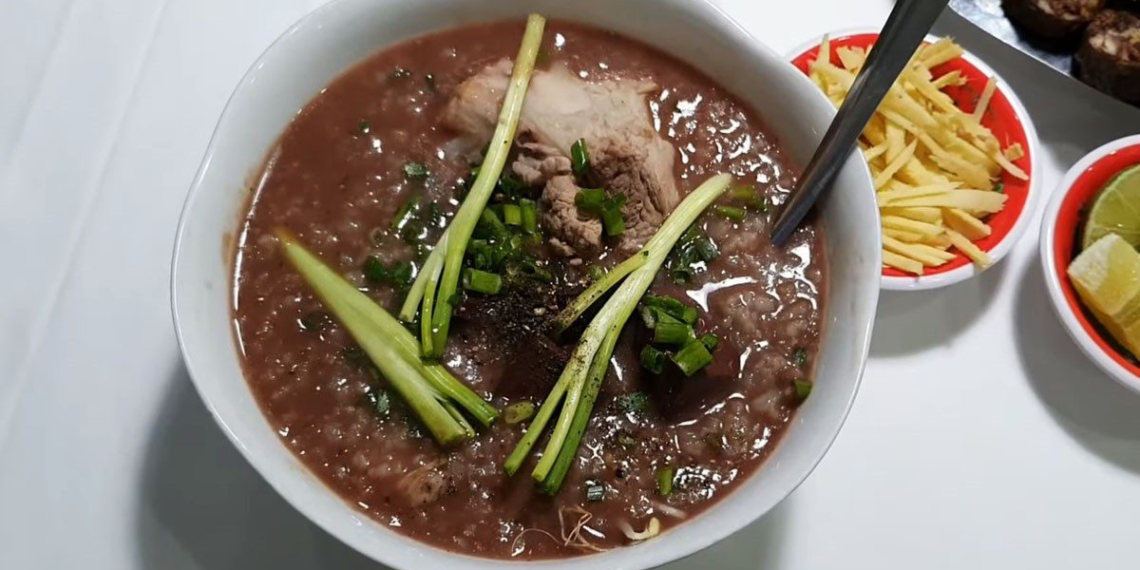-
Preparation
15 minutes
-
Cooking
1 hour
-
Difficulty
Easy
Cái Tắc porridge is a specialty dish of Hau Giang, a rustic dish that has captivated many travelers with its rich and fragrant flavor. Today, let’s join TasteVN cook this hot and attractive porridge right away!
Ingredients for Cái Tắc Porridge For 4 people
Ground pork 500 gr Rice 250 gr Pork bones 500 gr Pork heart 1 piece Pork liver 1/2 piece Pork kidneys 1 piece Pork intestines 1 piece Pork throat 1 piece Middle intestine 500 gr Young intestine 200 gr Stomach 400 gr Pork blood 700 gr Garlic 4 cloves Red onion 5 cloves Lemongrass 4 stalks Cilantro root 14 gr Green onion 5 stalks Ginger 1 piece Cassava 2 pieces Mung beans 50 gr (with skin) Various herbs 200 gr Bean sprouts 50 gr Ginger wine 2 tablespoons Cooking oil 8 tablespoons Fish sauce 6 tablespoons Vinegar 5 tablespoons Whole pepper 1 tablespoon Common spices a little (salt/ sugar/ seasoning/ monosodium glutamate/ ground pepper)
How to choose fresh ingredients
How to choose fresh minced lean meat
- Typically, you should choose the lean pork shoulder or pork belly to make minced meat, ensuring the meat’s tenderness and sweetness.
- If you only have pure lean meat, the dish will be mushy and not tasty. The standard lean-fat ratio is usually 8-2 or 9-1, which will help the minced pork have a light fattiness, deliciousness, and appeal.
- The pork must be thick, firm, bright red, and elastic. When you press your finger into the meat, it should not dent or stick but return to its normal state immediately.
How to choose fresh pig intestines
- You should choose pieces of liver, kidneys, pig hearts, etc., that are bright red or pink, evenly colored, and not choose pieces that are dark or yellowish because those intestines are not fresh, have been kept for too long, or are diseased.
- Avoid choosing soft, mushy intestines with strange smells, rough surfaces, blood clots, or white spots like rice grains, as those are intestines from sick pigs.
- Fresh intestines are best, ideally from freshly slaughtered pigs, with good elasticity and no strange foul smell.
How to choose good pig skin
- You should choose pieces of skin that have a rosy color, with no bruises or tiny black spots on the surface.
- Choose skin that is thick, smooth, and large. When you press it, it should have elasticity and not have a strong fishy smell.
- Additionally, limit purchasing very white pig skin as it may have been soaked in chemicals for longer preservation.
How to choose fresh pork bones
- To have a delicious broth for your porridge, you should choose good quality pork bones with a distinctive smell.
- Good quality bones should be bright in color, not pale, have no strange smells, and not be cold, approximately the size of 2-3 finger joints.
- If the bones are larger, they are from sows; if they are smaller, they may be from sick piglets that had to be slaughtered early for sale. Ideally, you should choose medium-sized bones.

How to Prepare Cái Tắc Pork Intestine Porridge
-
Prepare the tongue and stomach of the pig
The tongue and stomach of the pig should be washed with water after purchase. Then, place a pan on the stove, add 4 tablespoons of fish sauce, turn the heat to medium, and gradually add the tongue and stomach of the pig.
Blanch for about 30 seconds, then take them out and use a knife to scrape off the slime and dirt on the surface, then wash them clean and let them drain.
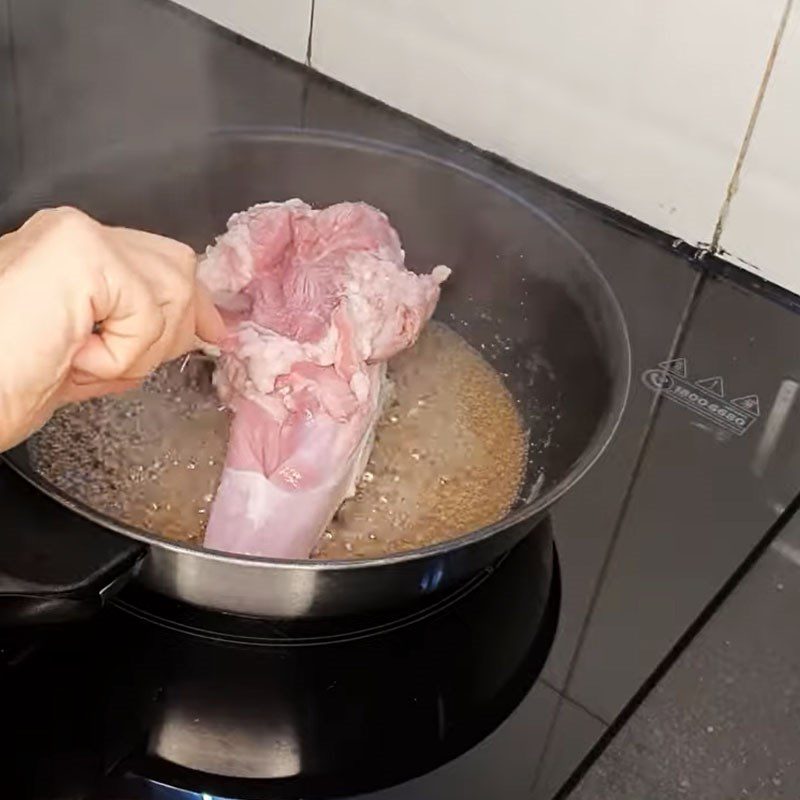
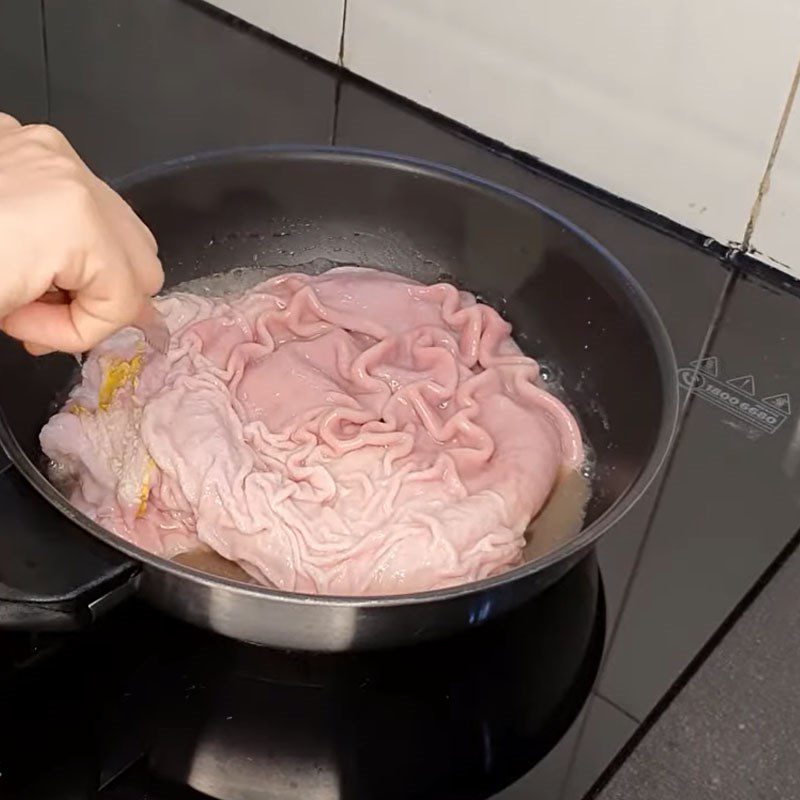
-
Prepare the intestines and throat
When purchased, cut the throat into 2 – 3 pieces, rinse several times with cold water until clean. Place the throat and intestines into a bowl, add a little water, 2 tablespoons of salt, and 3 tablespoons of vinegar.
Rub them thoroughly, then rinse several times with cold water until the vinegar smell is gone and let them drain. Then, let them sit to drain the water.
How to Clean Pig Intestines Without a Fishy Smell- To eliminate the fishy smell of the intestines, you can use lemon juice or vinegar to scrub away the odor. After that, rinse again with salt water to kill bacteria and clean them once more.
- Next, blanch the intestines in hot water to firm them up, then rinse again thoroughly to finish.
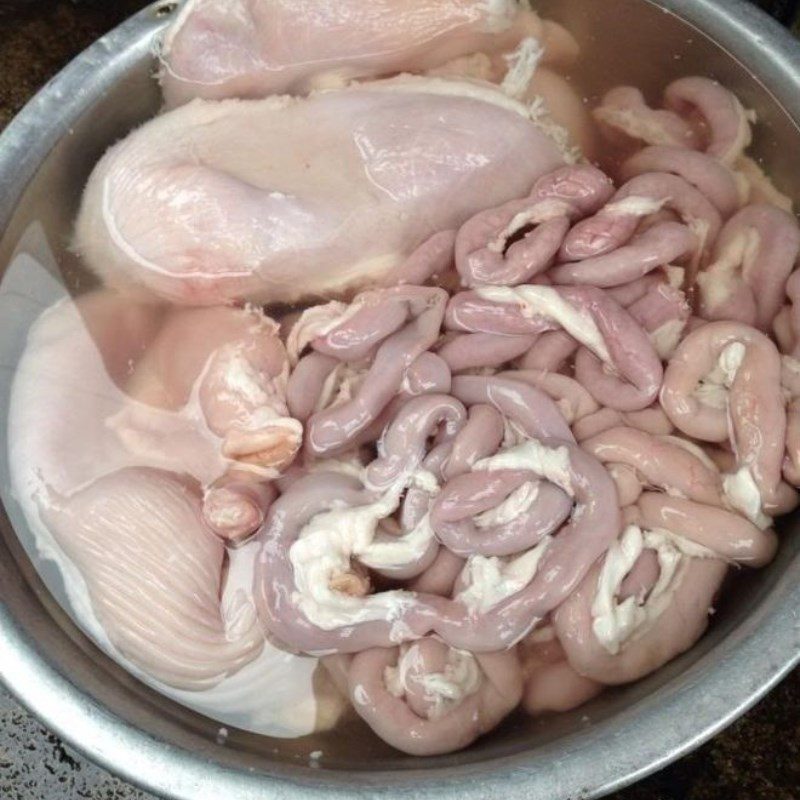
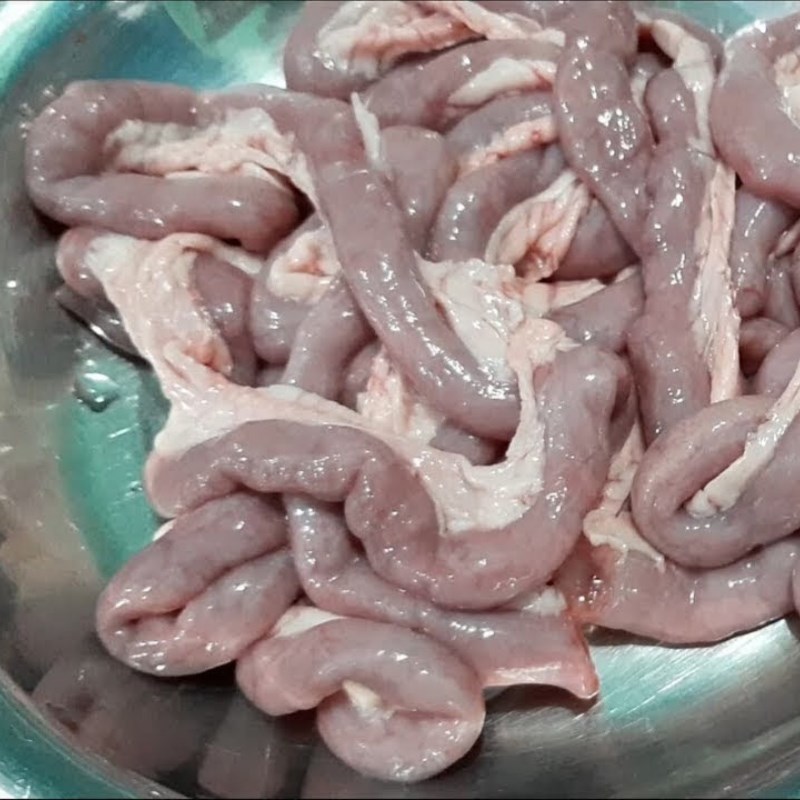
-
Prepare the liver, pig kidney, and sugarcane leaves
After buying the liver and sugarcane leaves, place them in a basin of diluted saltwater, washing and squeezing them with your hands, then rinse several times with clean water and let them drain. For the pig kidney, cut off the white part in the middle and wash it with vinegar and salt.
How to prepare pig liver without a fishy smell- Method 1: It is advisable to blanch the liver for about 20 minutes before cooking, which helps reduce bacteria and eliminate the smell.
- Method 2: It is recommended to marinate the liver with alcohol, ginger, and a little salt before blanching in boiling water to remove the fishy smell from the liver.
How to prepare pig kidney without a fishy smell
- Rinse the kidneys, cut them in half, and remove the smelly white part from both halves. Use a knife to score the surface of each half of the kidney and then make diagonal cuts in a “mesh” pattern.
- Evenly rub salt over the kidney pieces, let them sit for about 2 – 3 minutes, and then rinse thoroughly. Continue repeating this process a few times until the pig kidney is no longer smelly.
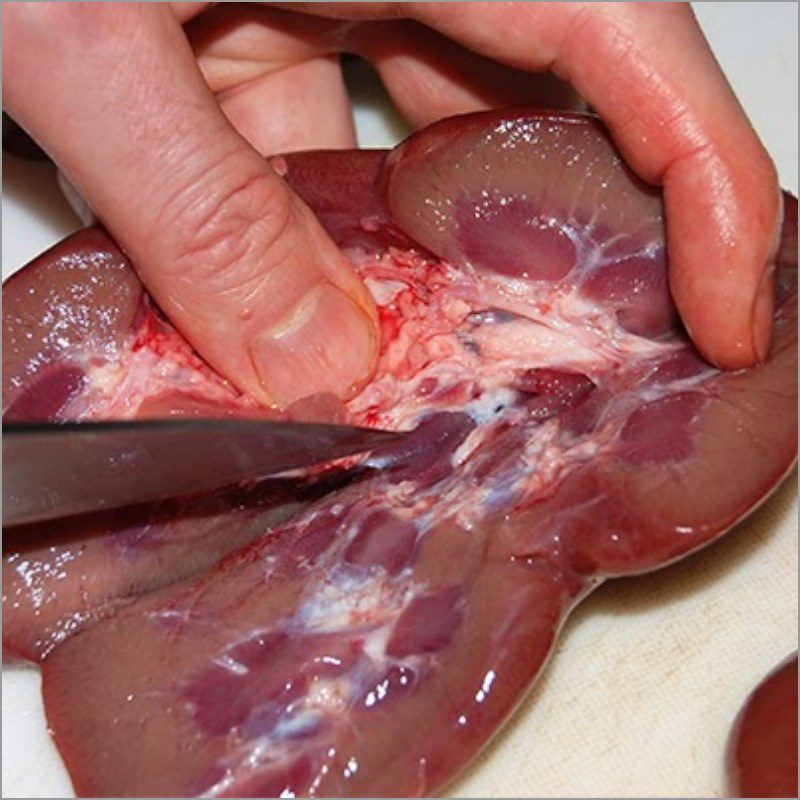
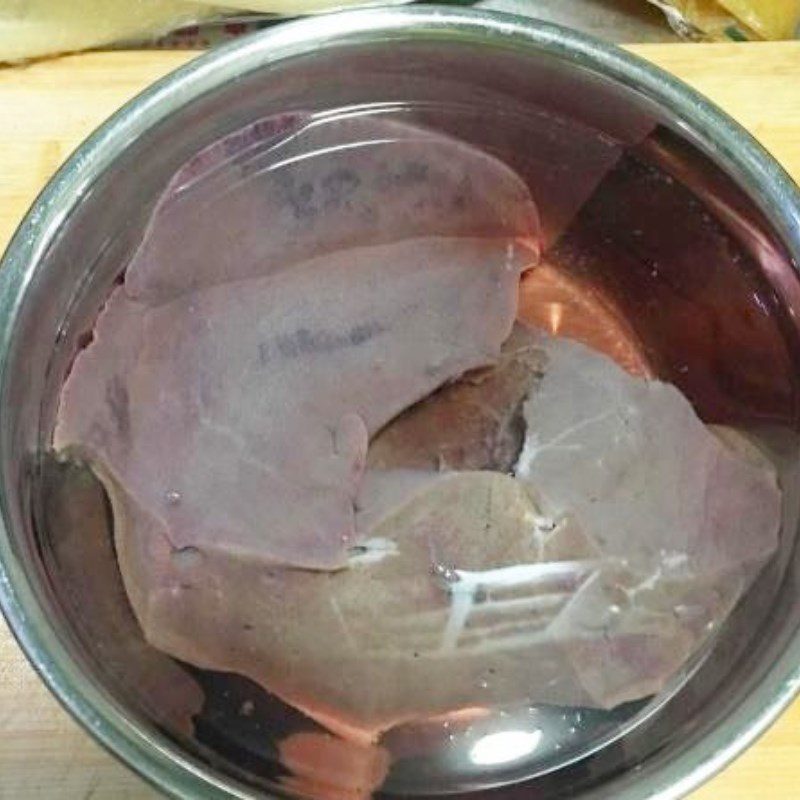
-
Boil the pig’s intestines
Put a pot of water on the stove, add 2 tablespoons of ginger wine, then add the pig bones and all the pig’s intestines to blanch briefly in boiling water, then remove them.
Put another pot on the stove, add 4 liters of filtered water, then add 2 tablespoons of sugar, 2 tablespoons of salt, 1 tablespoon of monosodium glutamate, and 1/2 tablespoon of seasoning powder to the pot. Once the water boils, add the bones, pig heart, kidney, liver, stomach, throat, sugarcane leaves, pig’s lung, and blanched pig skin one by one, then add 6 shallots and 1/2 a sliced ginger, sliced cassava, and cilantro roots into the pot.
Cook on low heat, boil until the intestines are soft for about 20 – 30 minutes.
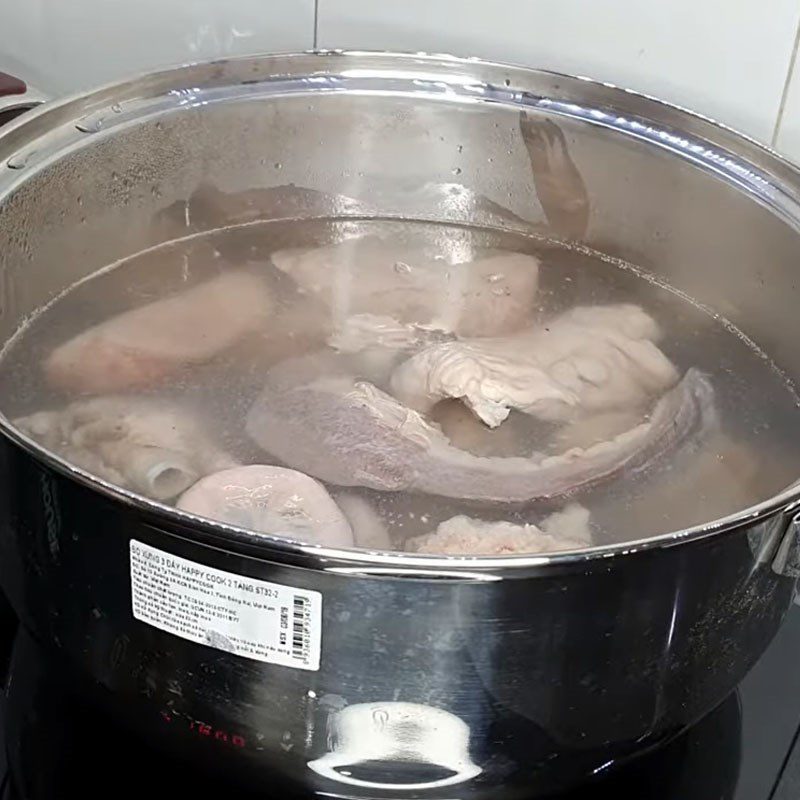
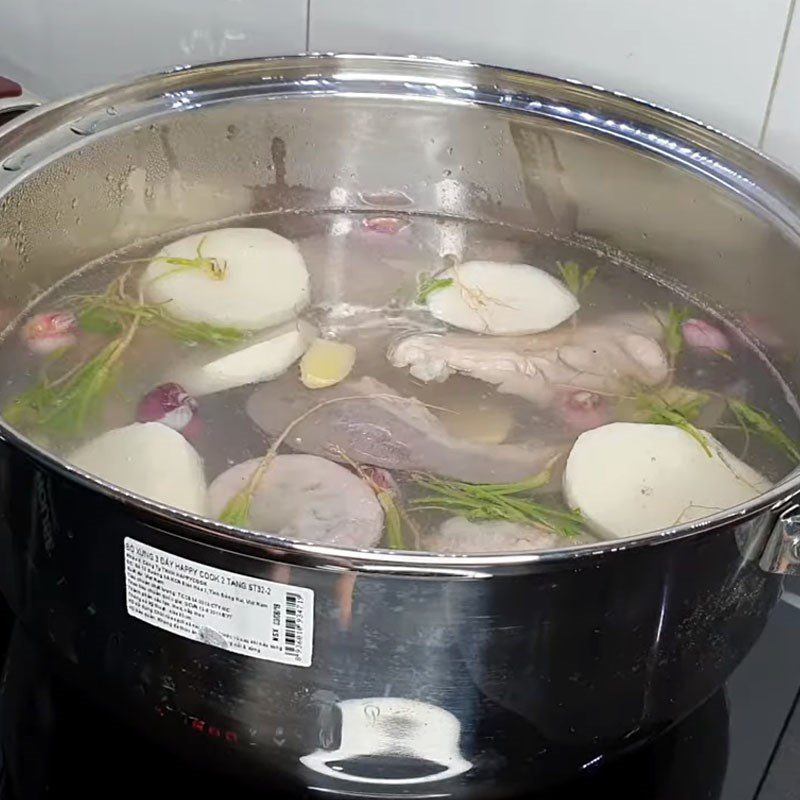
-
Prepare the remaining ingredients
Peel and wash 2 cassava roots, then use a knife to cut them into bite-sized rounds.
Wash 50g of bean sprouts and let them drain. Clean 3 green onions and chop them finely, wash 14g of cilantro roots. Chop 4 stalks of lemongrass finely.
Peel the shallots and garlic, then chop them finely with a knife.
-2.jpg)
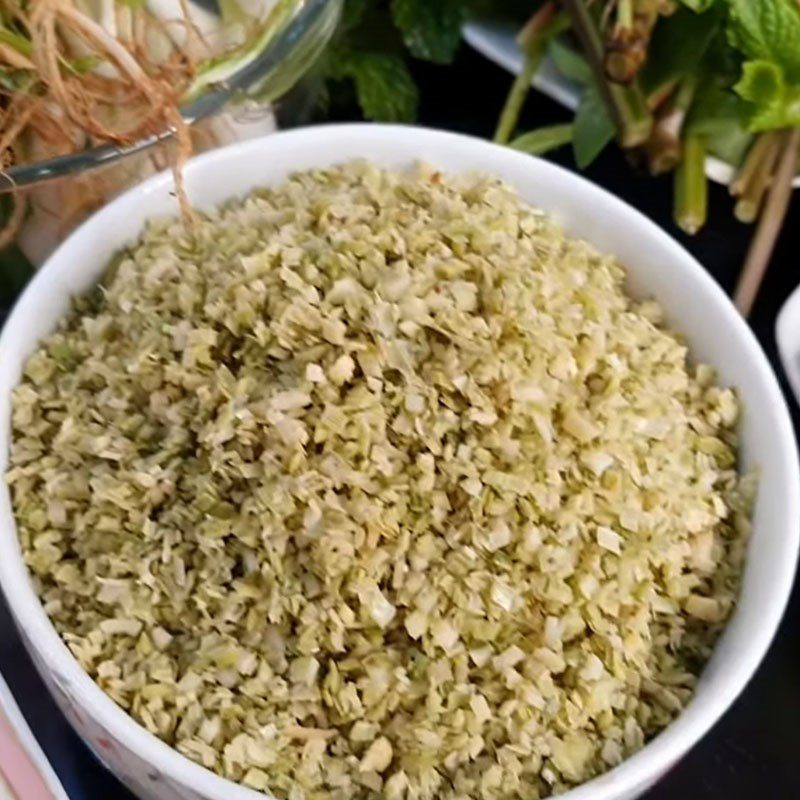
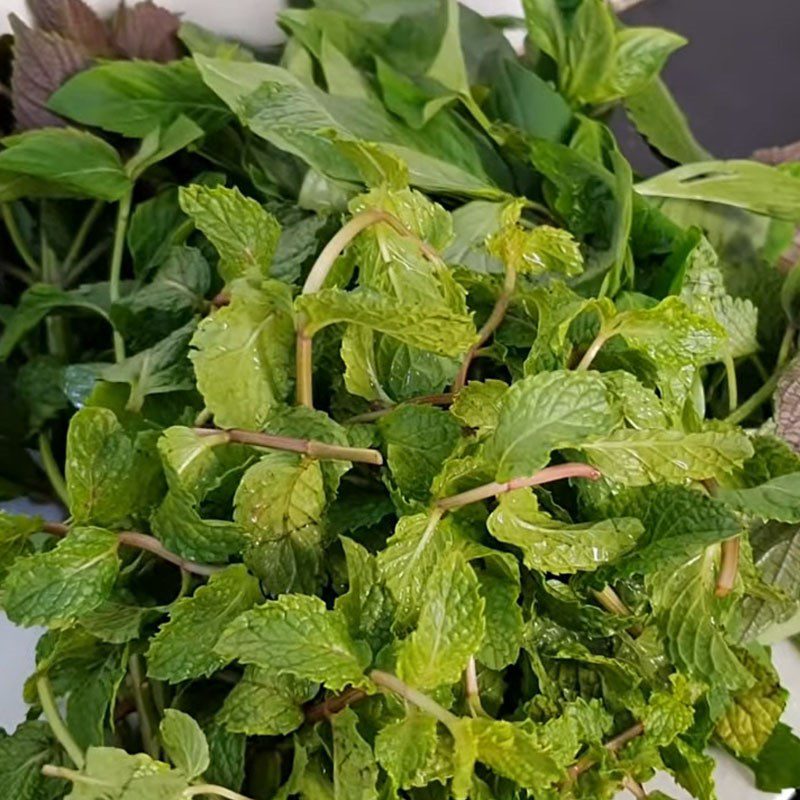
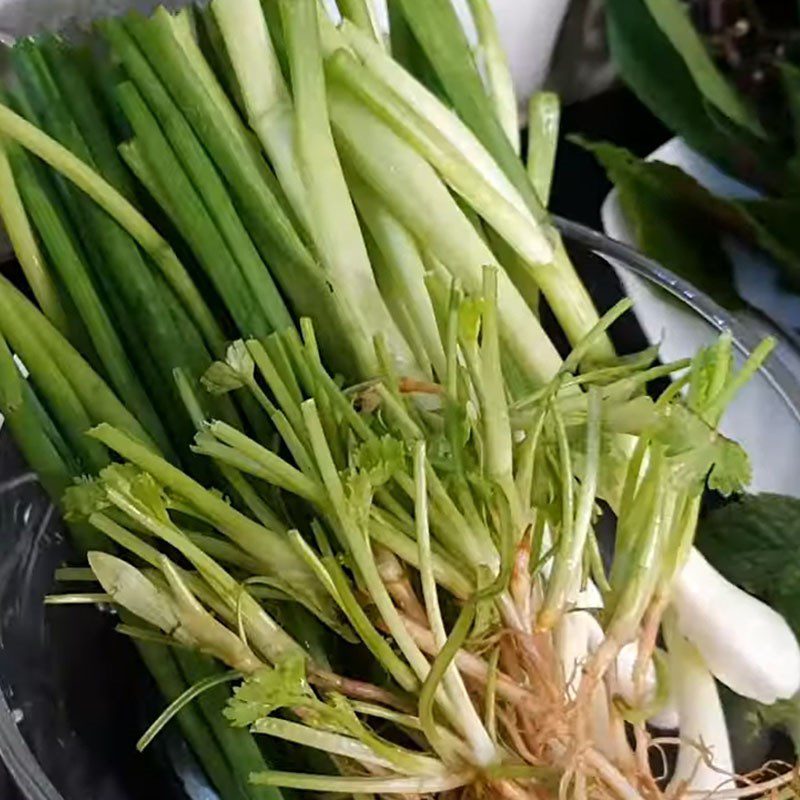
-
Fry the spices until fragrant
Place a pan on the stove, wait for the pan to heat up, add 4 tablespoons of cooking oil, and then add minced onion, garlic, and finely chopped lemongrass to fry until fragrant and golden over low heat for about 6 minutes. Then turn off the heat and strain out the oil.
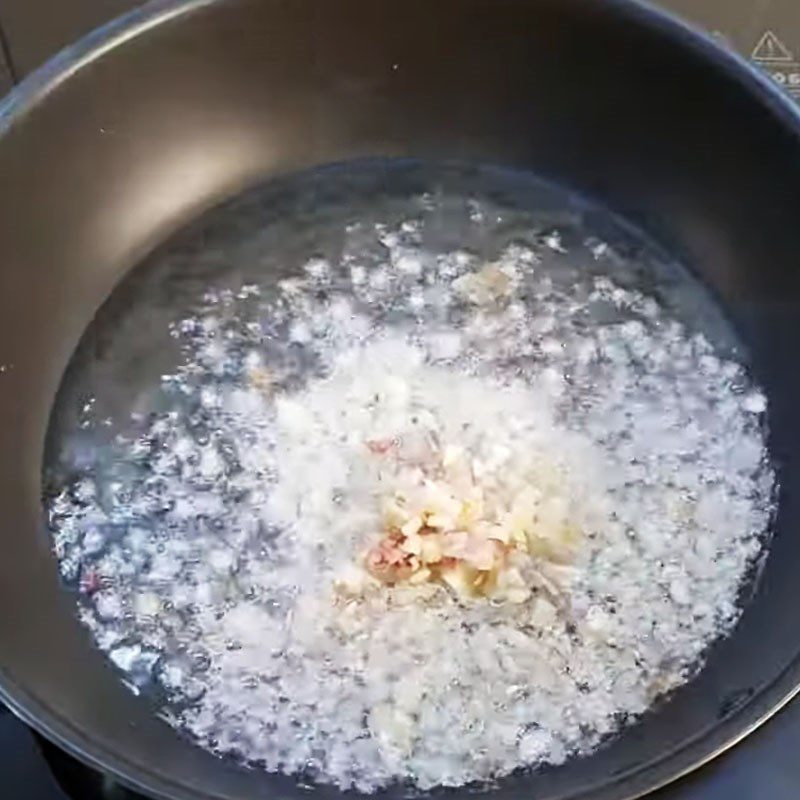
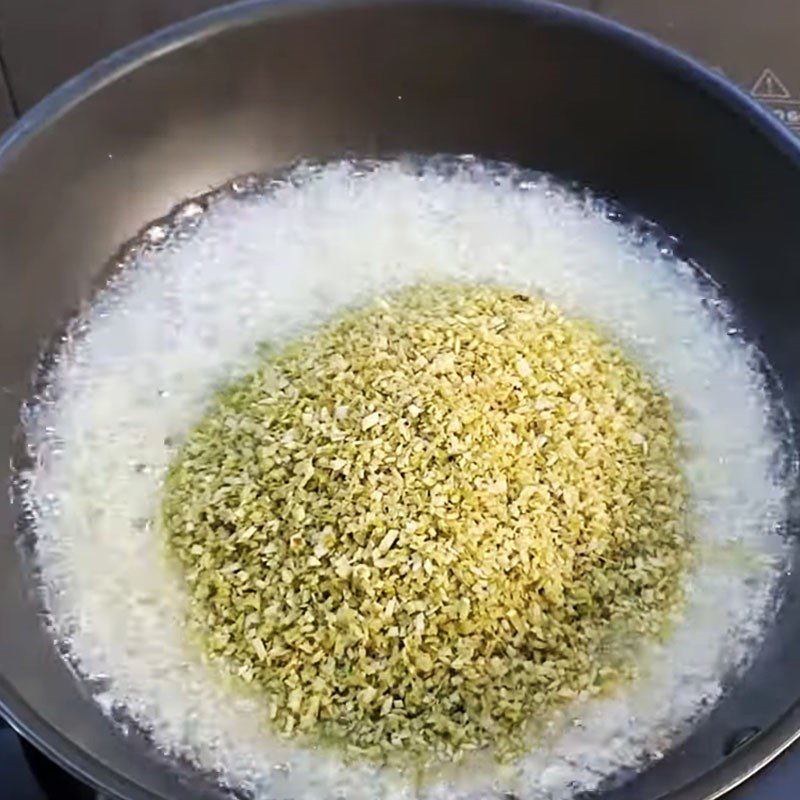
-
Mix and stuff the sausage filling
Prepare a basin, add 500g of ground pork, 400g of tripe, throat, and finely chopped pig intestines, 300g of pig blood, 85g of finely chopped scallions and cilantro, 50g of peeled mung beans, and 150g of golden fried minced onion, garlic, and lemongrass that has been strained.
Season with 1 tablespoon of sugar, 1/2 tablespoon of salt, 1/2 tablespoon of seasoning powder, 1/2 tablespoon of monosodium glutamate, 1 tablespoon of whole pepper, and 1/2 teaspoon of ground pepper. Then use a spoon to mix the mixture evenly.
Next, take 500g of cleaned pig intestines, tie one end with string, insert the other end into a funnel, and proceed to stuff the filling into the intestines until all the prepared filling is used up.
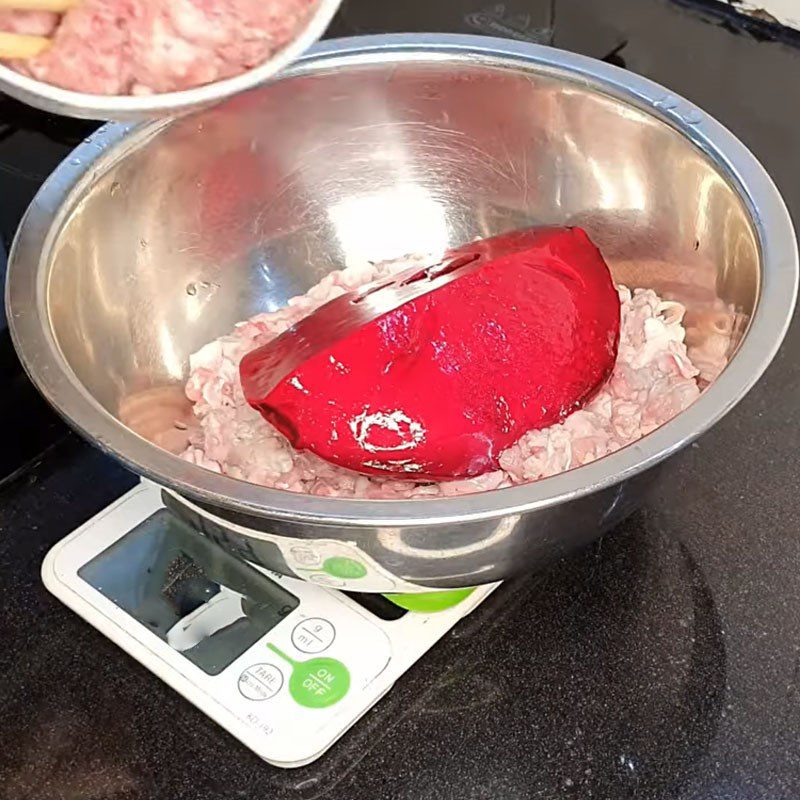
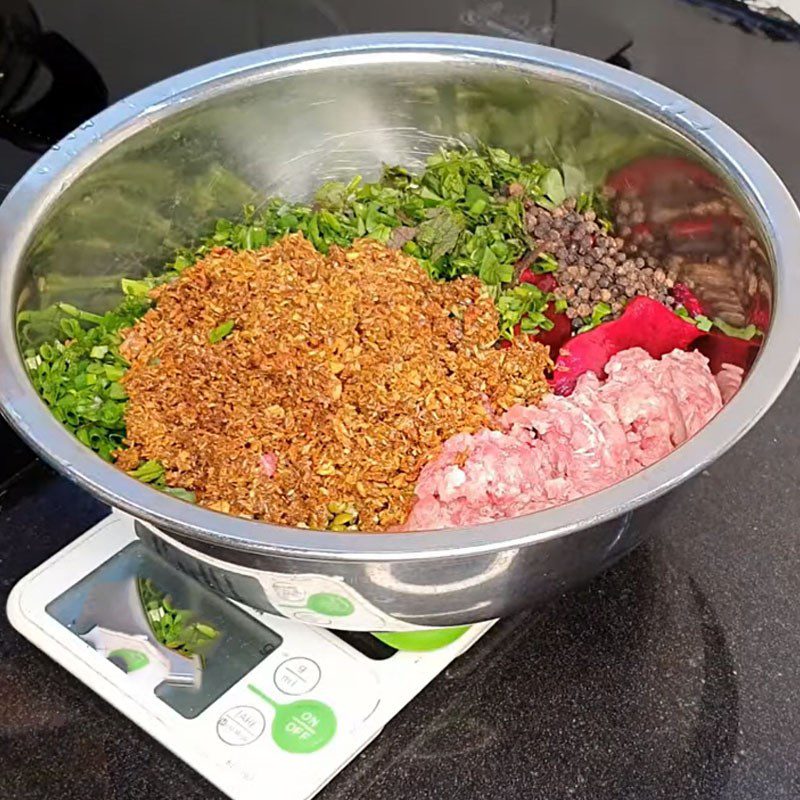
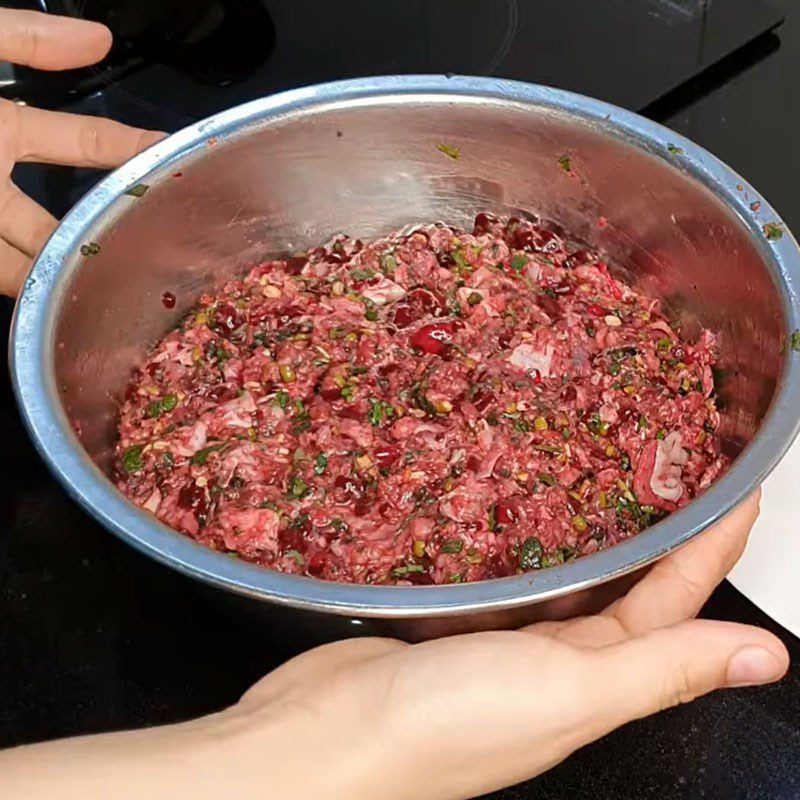
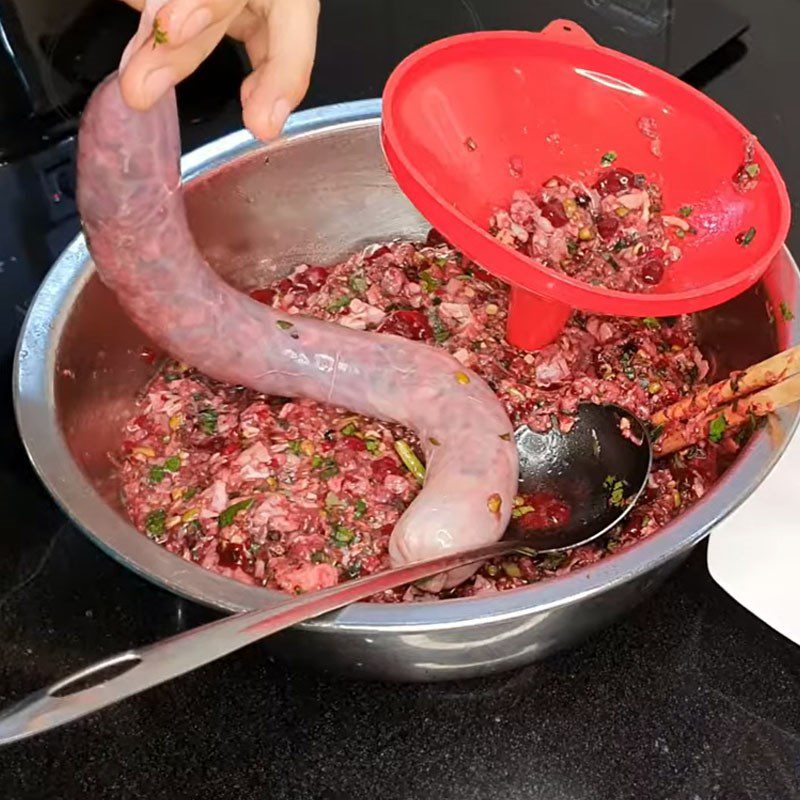
-
Boil and fry the sausage
Put a pot on the stove, add 2 liters of filtered water, wait for the water to boil, then add the sausage to boil over medium heat for about 20 minutes until the sausage is cooked, then take it out. Before putting the sausage into boil, use a needle to poke holes in the sausage to release excess air inside to prevent the sausage from bursting while boiling.
Place a pan on the stove, use the oil that was used to fry the onion and lemongrass to fry the sausage for more aroma, wait for the oil to heat up, then add the sausage to fry over low heat for about 7 minutes until golden brown, then take it out.
How to tell if the boiled sausage is cooked: To check if the sausage is cooked, you can use a toothpick to poke the sausage while boiling; if no pinkish liquid flows out, then the sausage is cooked, and also make sure the water completely covers the sausage and monitor the time long enough.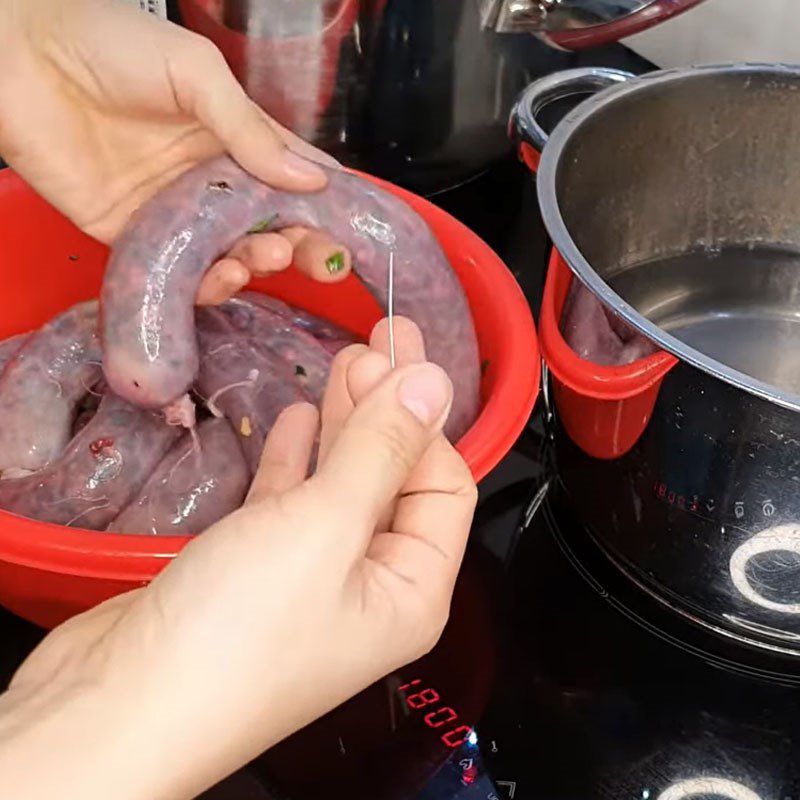
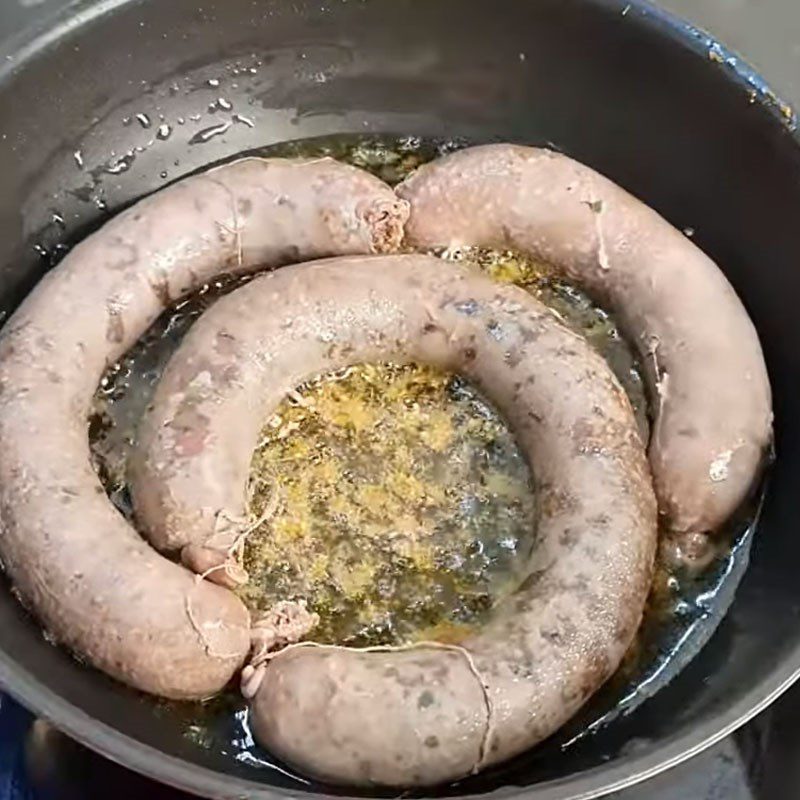

-
Sauté the rice
Place a pan on the stove, add 1 tablespoon of cooking oil to the pan, wait for the oil to heat up, then add 1 tablespoon of minced onion and garlic and sauté until fragrant and golden, then add 250g of rice and stir continuously over low heat for about 7 minutes until the rice turns slightly golden and releases a fragrant aroma, then turn off the heat.
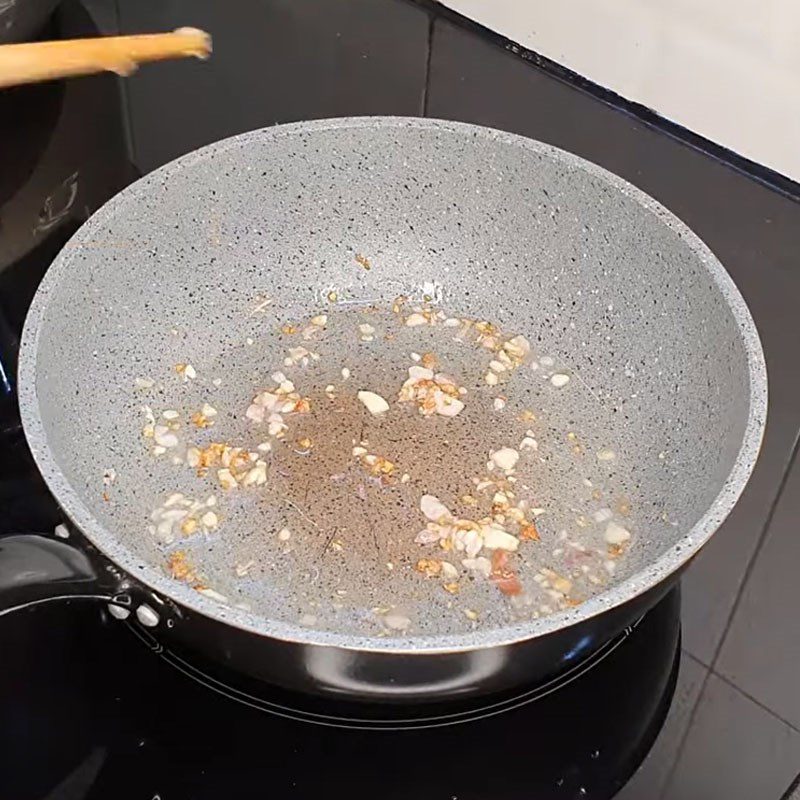

-
Cook the porridge
You use the pot of boiled offal, remove all the offal and put it into a basin of cold water, then add the sautéed rice to cook on low heat for about 15 minutes until the porridge is soft and mushy.
Next, you add 1.6 liters of boiled water with the sausage to cook on medium heat until the water boils again, then add 700g of chopped pig blood to cook for another 20 minutes.
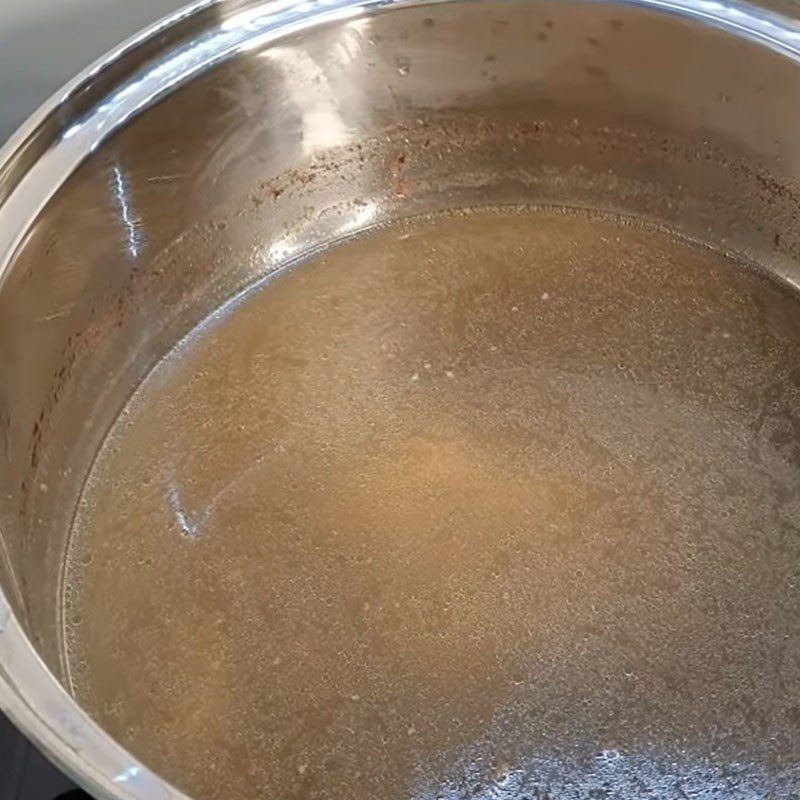
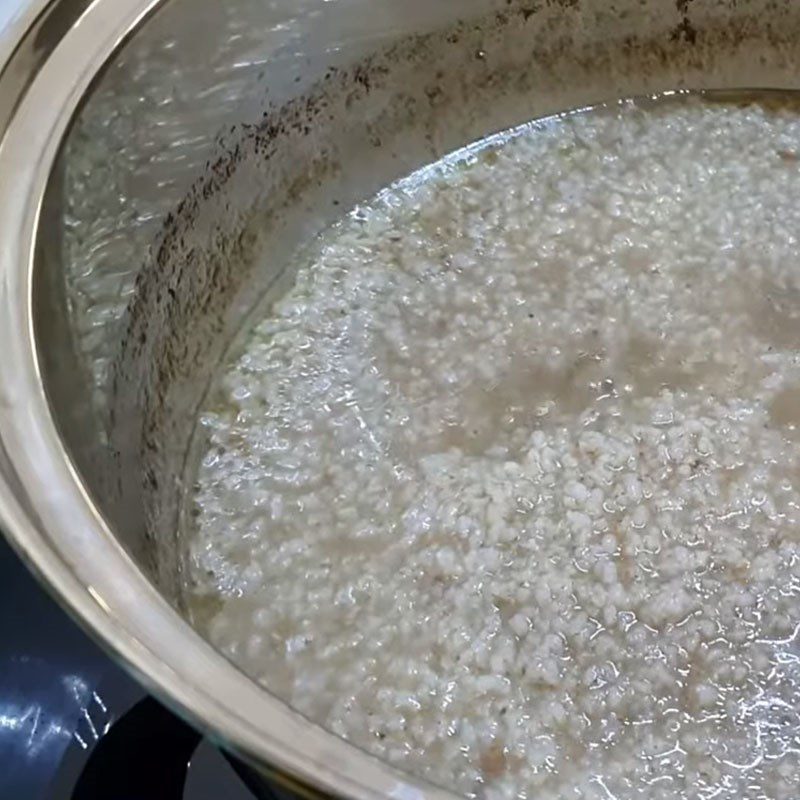
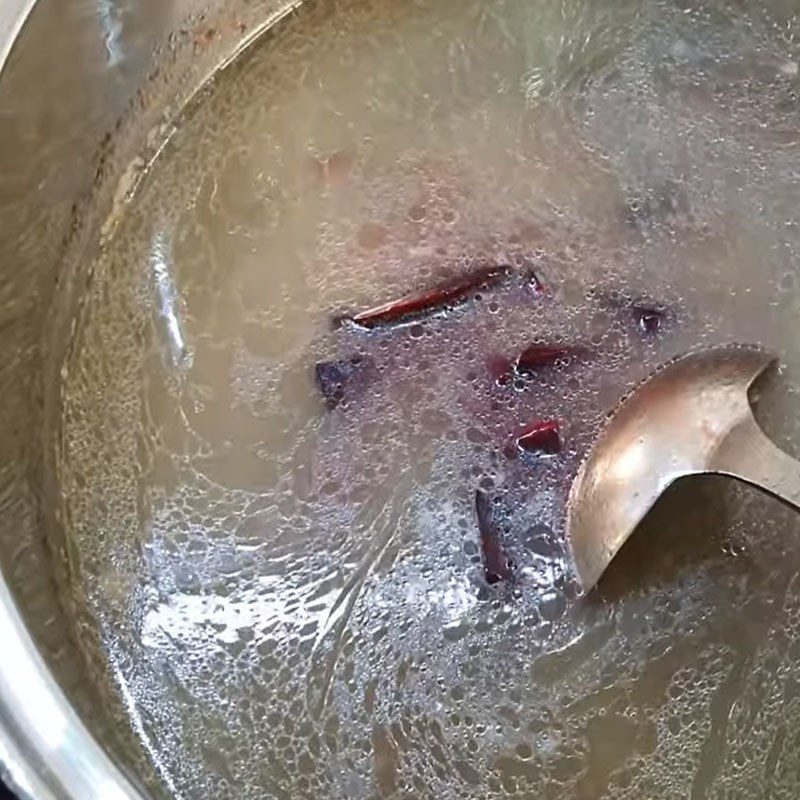
-
Completion
You cut the offal and sausage into small bite-sized pieces and then place them on a plate.
Then, you take a bowl and put a little bean sprouts at the bottom bowl, then scoop out the porridge, add a little chopped green onion and pepper to enjoy.

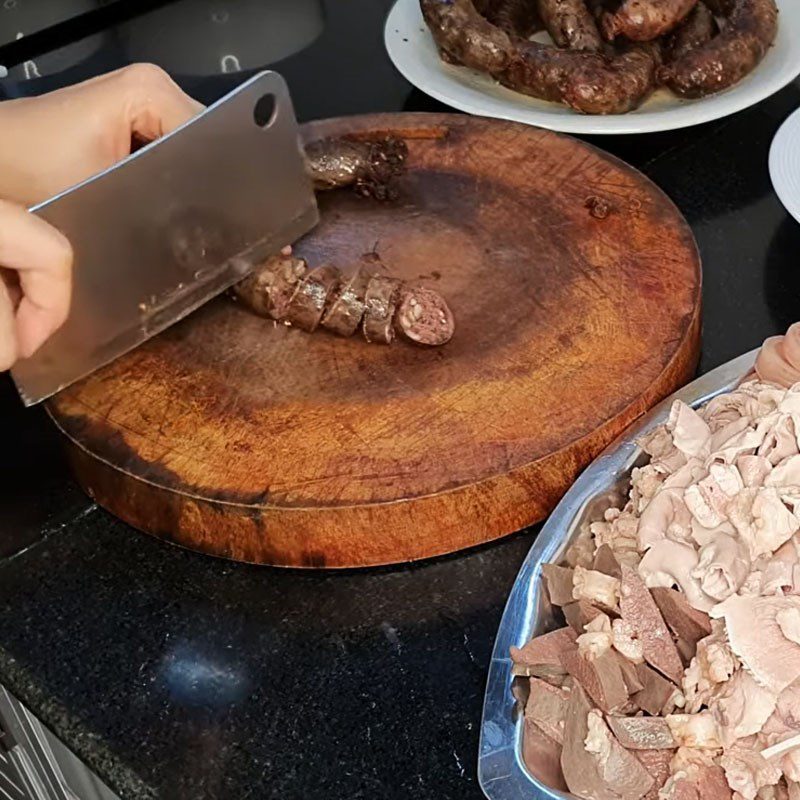
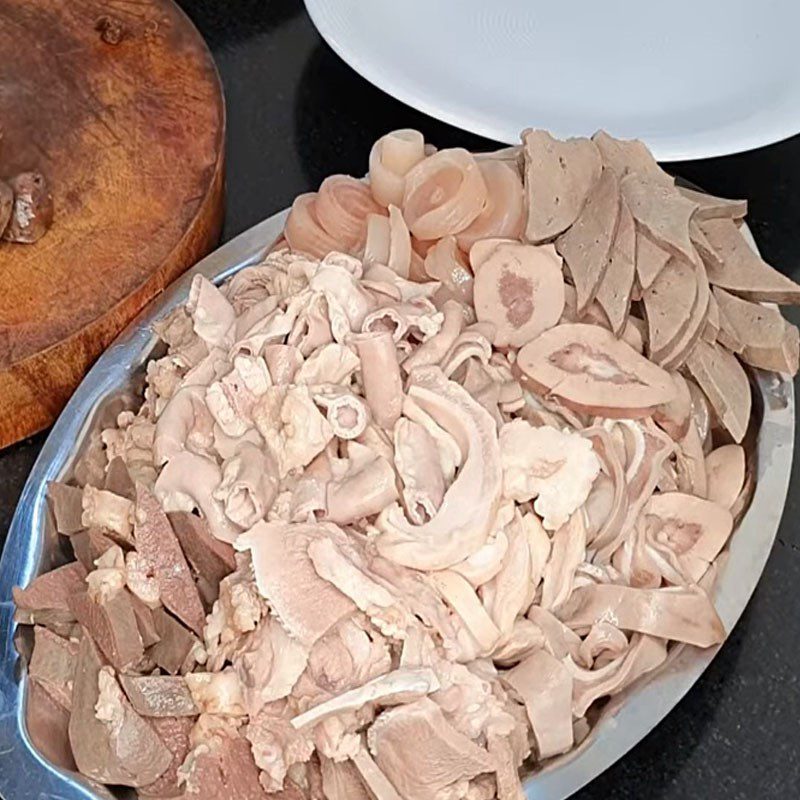
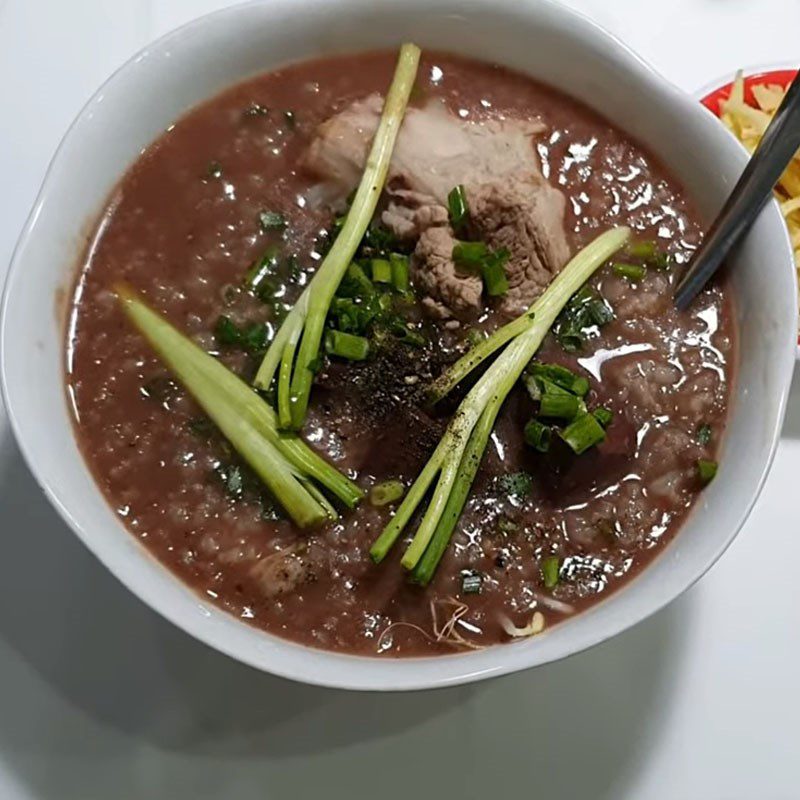
-
Final Product
The porridge has a moderate thickness, seasoned just right with a strong aroma of spices.
The natural sweetness of the intestines and pig’s blood, processed carefully to eliminate any unpleasant smell, the pig intestines are chewy and crispy, combined with the fragrant smell of ginger and scallions along with a hint of pepper, all perfectly combined to create the delicious and appetizing Cái Tắc porridge.
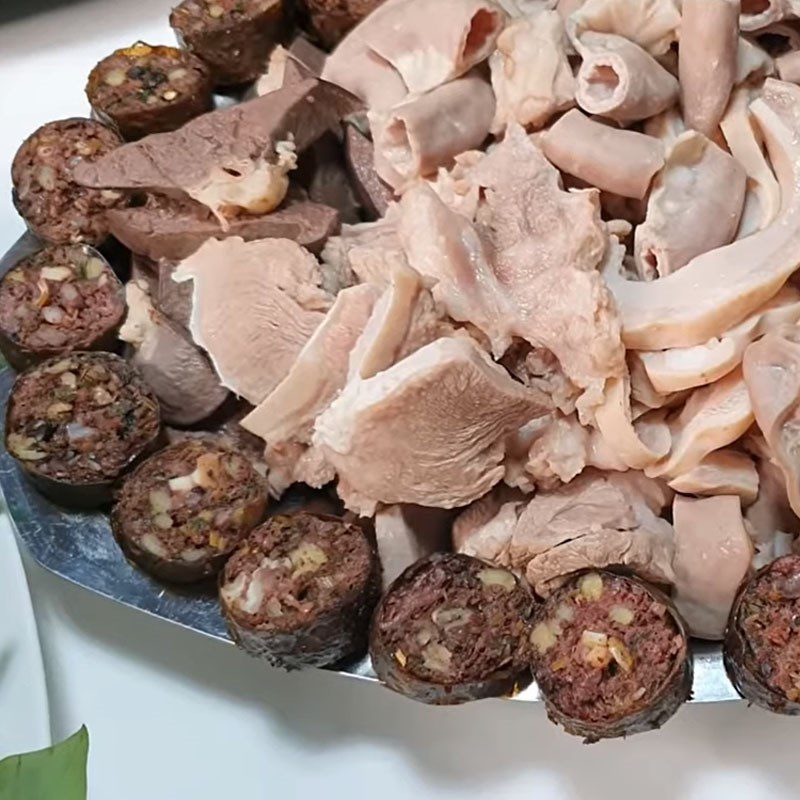

The famous cháo lòng Cái Tắc, once you try it, you’ll be hooked. Let’s head to the kitchen and make this delicious dish with the detailed instructions just provided by TasteVN to nourish your whole family!
